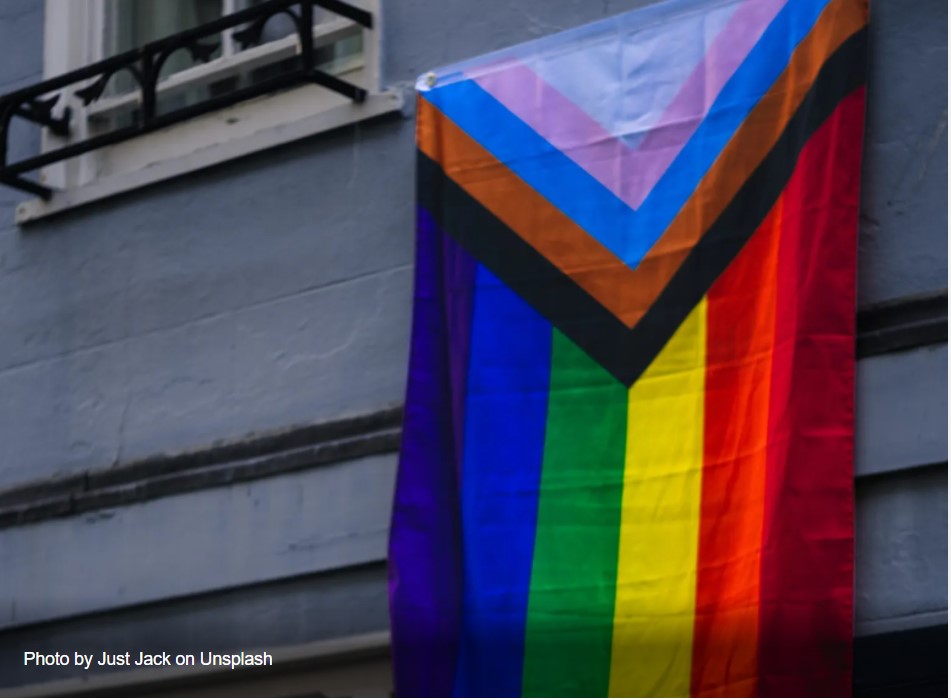The State Of POC LGBTQ Characters On Television. It’s good, but not great.
The number of LGBTQ people of color on primetime television is higher than the number of white LGBTQ people for the first time.
In its annual Where We Are on TV Report, GLAAD found that POC LGBTQ characters increased in percentage on both cable and primetime scripted broadcast shows. In primetime, of the 101 regular and recurring LGBTQ characters, 53% are POC. The number is similar on cable, where 52% of the 118 LGBTQ characters are POC, which is an increase of 4% from the previous year.
However, the overall percentage of POC characters on television saw a slight decrease from last year, the first decrease since the 2011/2012 report. Of the 773 series regulars on the big five broadcast networks, 354, or 46%, were people of color.
This can be explained by a show with a significant POC cast ending or being cancelled, according to Spencer Harvey, communications manager at GLAAD. Examples are The Baker and the Beauty, which featured an almost entirely Latinx cast, and Fresh off the Boat, which had a cast of mostly AAPI characters.
“Shows will always end and new shows will always take their place – such is the nature of television – but it’s important that when a show with a cast that speaks to an underrepresented community ends, that another can take its place,” Harvey said. “This is why it’s so important to have more than one show that speaks to a community: one show getting cancelled should not equate to a whole group of people not seeing themselves on screen.
After years of a stagnant percentage of POC characters on television, there was a consistent upward trend starting in the 2014/2015 season until this year. The increases were by 3%-6% every year, nearly doubling the 2014/2015 rate of 27% to 47% in the 2019/2020 season.
“There are many factors that led to this, like a push from POC within the industry to tell more stories that haven’t been seen on television before,” Harvey said. “This also times with the Black Lives Matter movement gaining traction, the work of activists and organizers spreading into Hollywood and the results on our screens manifesting on our screens. This is not to say that there isn’t still a long way to go.”
All five broadcast networks measured in the report saw at least a slight decrease except CBS, which saw a 2% increase in POC characters. FOX, which is in last place with only 35% of its series regulars as POC, also saw the biggest decline since the last report with a 5% decrease. NBC is leading the broadcast networks in racial diversity with 52% of its series regulars as POC characters.
In June 2020, The Hollywood Reporter compiled a list of the “50 most powerful LGBTQ players in Hollywood,” and less than half of the list was made up of non-white people.
“Until there’s every type of LGBTQ person represented on screen, there’s still work to be done,” Tre’vell Anderson, an LGBTQ activist and editor for queer media outlet Xtra, told NBC News. “Every member of the LGBTQ community deserves well-developed, well-written, nuanced depictions of their lived experiences written by and portrayed by members of their own community — and these stories should be written by storytellers beyond the same four creators.”
PRIDE compiled a list of 31 TV shows that feature POC LGBTQ characters, including How to Get Away with Murder, Master of None, Orange is the New Black, Pose and Brooklyn Nine-Nine.
Harvey highlighted Pose as the show with the most queer and trans characters of color, which “also provides the highest number of transgender character of any shows, and the only characters in the report living with HIV.”
“Not to be a broken record, but losing a show like Pose will create a void that we hope other shows fill,” Harvey said. “A whole ensemble being Black and Latinx queer and trans characters is rare, but it shouldn’t be, and we hope to see more shows like Pose being greenlight, so these numbers don’t deflate.”
In its three-season run, which wrapped a few weeks ago, Pose opened so many doors. Without Pose, there will not be any characters living with HIV on TV, according to Harvey. GLAAD is calling on the industry to introduce “no less than three” regular or recurring LGBTQ characters living with HIV each year in scripted primetime broadcast, cable and streaming.
This is not the first time GLAAD has called on the industry to be more inclusive of LGBTQ characters on shows. It annually challenges the industry to “reflect the entirety of the community, specifically voices that aren’t often heard,” Harvey said.
“There are still so many stories from queer and trans people of color that aren’t told on television, and we want to push the industry to invest in creators from these communities and tell those stories,” Harvey said. “The response from the platforms has been promising in wanting to create more stories for LGBTQ POC characters.”
It is worth noting that several shows with POC LGBTQ characters – Dear White People, The L Word: Generation Q – didn’t air during the research period for GLAAD’s report, but they will return to screens. GLAAD does not keep track of actors, only characters, in this report.
